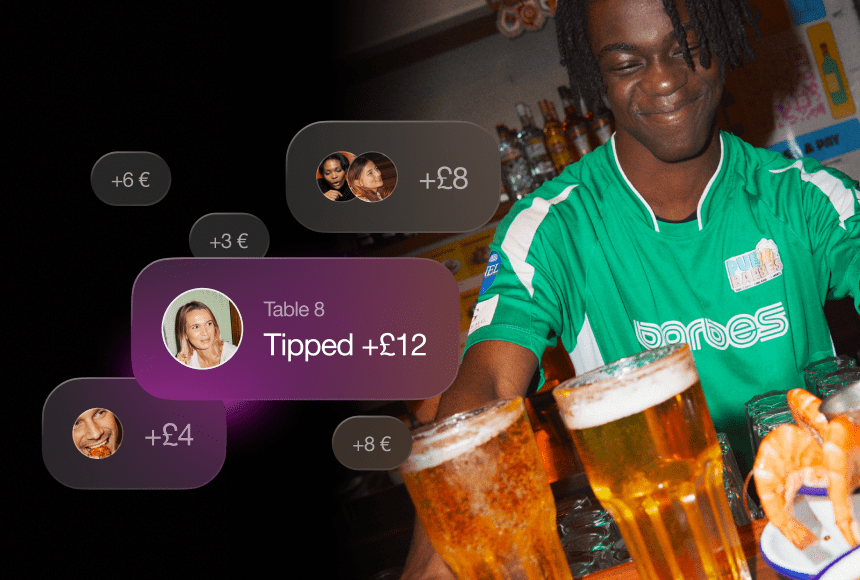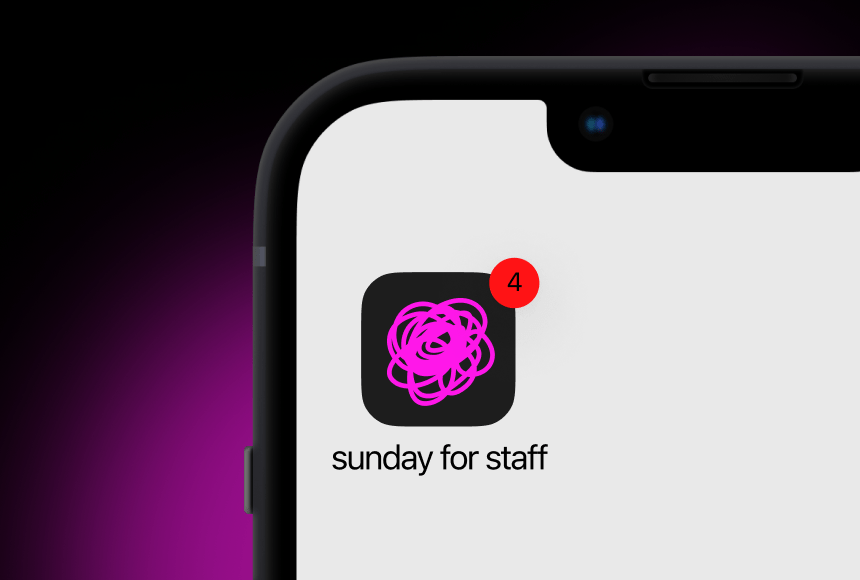
What’s Next for Gratuities in the Coming Years?
Why Tipping Is Evolving at Record Pace
The way diners tip has been shifting for years, but 2025 could mark the biggest leap yet. More guests than ever pay by card or phone, leaving fewer coins behind. Some restaurants are introducing service charges, while others rely on contactless technology to prompt tips digitally. According to Big Hospitality (source), more than half of UK consumers are open to a fully digital payment experience—tipping included.
For restaurant owners, these trends mean the old-fashioned bowl of spare change or scribbling an extra pound on a receipt is quickly fading. Instead, customers expect speed, clarity, and a convenient way to reward good service. Yet the future of tipping isn’t just about changing payment options. It’s also a window into broader shifts—think staff expectations, generational preferences, and the growing importance of data analytics in day-to-day operations. Below, we’ll dive deep into the key tipping trends set to shape the restaurant industry in 2025 and beyond.
The Surge of Digital Tipping
One of the most noticeable tipping trends is the steady rise in digital solutions. From scanning a QR code to tapping a phone on a card machine, diners want the entire payment and tip process to be frictionless. A Hospitality Net (source) report reveals that contactless transactions increased by 30% in the last two years alone. This shift removes the guesswork over whether customers have enough cash—and it simplifies end-of-day reconciliations for managers.
- QR Code Tips: Some systems let diners scan a code to view their bill on a mobile device, then add a tip before finalising the payment. This approach often nudges larger tips, thanks to easy on-screen prompts.
- Card Reader Integration: Even if guests pay physically, updated card readers can invite them to add a tip in seconds—no rummaging for small change, no line on paper bills to fill in manually.
- Mobile App Options: A few restaurants even experiment with dedicated apps letting customers pre-authorise tips or revise them after receiving outstanding service.
The result is a more streamlined experience that benefits both diners—who appreciate the convenience—and managers, who gain real-time data and skip counting out notes and coins each night.
Increasing Transparency for Staff
In 2025, staff retention remains critical. Many workers in hospitality rely on tips to boost their base pay, so how you handle gratuities can seriously affect morale. The move toward digital tipping helps address longstanding concerns around distribution and fairness. When tips are logged electronically, your team can see exactly how much was collected. They’re less likely to suspect miscalculations or biased allocations.
- Consistent Splits:Whether you choose a tronc system or a shared pot, the numbers don’t lie. A staff member who worked fewer hours or fewer tables sees their portion reflect that automatically, not by guesswork.
- Real-Time Tracking:Some solutions allow employees to view their own tip totals mid-shift, giving them a motivational boost. They see direct rewards for great service right away.
- Worry-Free Compliance:With everything digital, it’s easier to record tips accurately. That means fewer HMRC headaches and fewer staff grumbling about potential underreporting.
Transparent tipping fosters trust. Staff who believe they’re treated fairly are more engaged, more likely to stay, and more motivated to wow your guests—especially in an industry known for staff turnover.
Cashless Customers, Higher Tips
As fewer people carry physical currency, restaurants that still rely heavily on cash tips could see diminishing returns. In fact, not having a user-friendly digital tip option might cost you. Younger diners especially rarely carry coins, and a Statista (source) study suggests more than half of Gen Z and Millennial customers prefer card or mobile payments for everyday purchases. Tipping falls under that same umbrella.
- Impulse Generosity: Digital tipping tends to encourage rounding up or pressing a predefined 15% or 20% button. Without the friction of fishing out coins, diners often tip more.
- Customer Convenience: People in a hurry appreciate finalising everything at once. There’s no waiting for the server or dealing with leftover change.
- Enhanced Brand Image: Offering contactless tipping signals you’re a forward-thinking restaurant that cares about convenience. That alone can tilt a satisfied customer into leaving a bit extra.
Think of digital tipping as the final flourish in a modern, seamless dining experience. When done right, it can even become a subtle upsell: diners may add a pound or two more than they would have if they’d needed exact cash.
Personalised Gratuities and Dynamic Suggestions
We’re also seeing an uptick in custom tipping experiences. Maybe your system suggests a higher tip if diners loved their main server, or if they lingered for extra drinks. Perhaps it automatically prompts 10% but invites them to type in a custom figure if they received exceptional service. These dynamic suggestions can be particularly impactful:
- Encouraging Service Excellence:When staff know the platform can highlight their performance, it motivates them to go above and beyond. Some solutions let employees see immediate feedback, forming a healthy loop of effort and reward.
- Tailored Promotions:It’s also possible to tie tipping to loyalty—like awarding diners bonus points if they tip above a threshold. A win-win: staff earn more, and customers might get a perk on a future visit.
By 2025, such custom approaches may well be standard in many UK eateries. They cater to the personal and interactive style guests now expect from modern hospitality.
Shift Toward Even Splits Among Teams
While historically, tips often went primarily to servers, many restaurants now distribute them across kitchen staff, bartenders, and even back-office roles. By 2025, expect more widespread adoption of this approach—reflecting the sentiment that the entire team contributes to the guest’s experience.
Digital tipping systems make it easy to program these splits. You can define a certain percentage for front-of-house, a portion for cooks, and so on. This practice also fosters unity; employees appreciate that behind-the-scenes staff—like chefs and dishwashers—get a fair slice of the gratuities. In an industry where staff often feel undervalued, such measures can significantly boost morale and retention.
Employee Input on Tipping Policies
Another emerging trend: managers soliciting staff input to refine tip rules. After all, employees have the most day-to-day experience with how diners tip, which shifts yield more gratuities, and what distribution models seem fair. In 2025, leading restaurants might set up short monthly or quarterly reviews to gather feedback on tipping and make adjustments.
- Boosting Engagement: Including staff in decision-making fosters a sense of ownership. They’re more likely to champion any changes if they had a say.
- Gathering Real Insights: Not all tipping patterns are obvious from raw data alone. Staff might mention that Thursday cocktail specials bring younger crowds who tip digitally, or that big wedding parties on Saturdays need extra explanation about your tipping policy.
By harnessing staff feedback, you shape a tipping culture that feels both effective and fair, rather than imposing changes from above.
Leveraging Tip Data for Growth
For many managers, tips are an afterthought—just another figure on the ledger. But as digital gratuities yield detailed data, savvy owners can tap into those analytics for strategic decision-making. Observing that staff who do the Monday lunch shift get fewer tips on average? Maybe it’s time to promote a special or rearrange rosters. Spot a pattern where tips spike after launching a new dessert? That might confirm its place on the permanent menu.
The point is, tips aren’t just staff income; they’re also a barometer of guest satisfaction. In 2025, more restaurants will harness this barometer to refine operations—perhaps even awarding small incentives to the day’s top tip earner, or using tip analytics to discover if a new interior layout improved the dining flow. By bridging the gap between tips and performance, you can keep your team motivated and your customers content.
Integrating with Solutions Like Sunday
Shifting to digital tips doesn’t have to be complicated. Tools like sunday let restaurants incorporate QR code payments, where guests can settle the bill—and add a tip—directly on their phone. It’s quick for the diner, straightforward for staff, and transparent for managers, who can monitor gratuities in real time. This integration also reduces the “Where’s my bill?” dilemma, as customers can pay whenever they’re ready, often boosting table turnover in the process.
Plus, sunday helps unify the payment and tipping steps, so staff see exactly what each table left without rummaging for stray coins or deciphering messy receipts. Everyone wins: guests exit on a high note, staff trust the fairness of distribution, and managers skip a time-consuming reconciliation each night.
Preparing Your Restaurant for 2025’s Tipping Landscape
Ready to ride the wave of digital tipping? Here’s how to lay the groundwork:
- Consult Your Team:Explain why you’re shifting to digital methods. Emphasise how it reduces errors, speeds up closing, and clarifies tip splits. Invite them to share any concerns so you can fine-tune the process together.
- Promote the Option to Diners:Use small table signs or a line on the menu: “Tip digitally here!” If they haven’t tried it before, a quick explanation from a friendly server can turn them into fans.
- Set Clear Policies:Whether you do a points-based pool or let servers keep their own, put it in writing so staff understand. That transparency reduces tension if someone questions their final tally.
- Monitor and Adapt:Check tip data weekly or monthly to see what’s working. If a new approach or split ratio doesn’t help, make changes. This agile mindset will keep your tip system fresh and effective.
Beyond these nuts and bolts, keep an open mind. Tipping trends evolve quickly, and 2025 might see new innovations—like auto-grat for large parties or synergy with loyalty schemes. Being nimble puts you ahead of competitors who cling to outdated methods.
Looking Ahead: A More Flexible, Tech-Driven Future
The tipping landscape in 2025 looks set to combine the best of technology and tradition. Diners still want to reward great service, but they expect a modern, frictionless way to do so. Restaurants that meet this need—through QR codes, contactless card readers, or even personalised digital prompts—stand to earn more, both in raw tip totals and in customer loyalty. Meanwhile, staff benefit from real-time clarity and fair distribution, reinforcing a positive workplace culture.
Embrace these changes early, and you’ll find yourself sailing smoothly into a future where tipping fits seamlessly into the overall dining experience. Think of it as refining that perfect balance: the timeless warmth of hospitality, harmonised with the sleek efficiency of the digital age. With the right strategy and the right tech partner, you can turn what was once a messy end-of-meal chore into an asset that benefits your entire restaurant ecosystem—fostering trust, loyalty, and higher revenues in one effortless move.
Find out more today
Drop us your details below and we’ll reach out within the next 24
More tips means a better service.
3X more tips mean 3X better guest-experience, and 3X better staff-retention.




